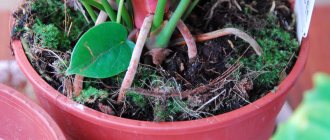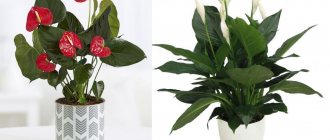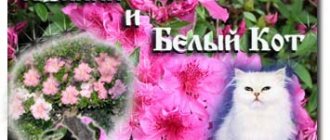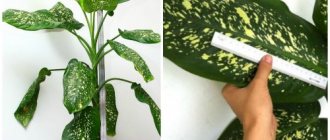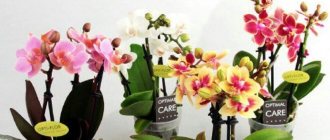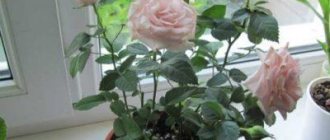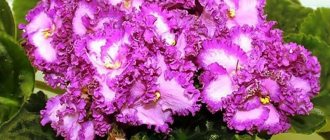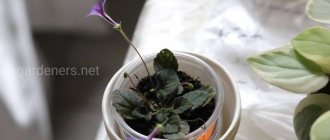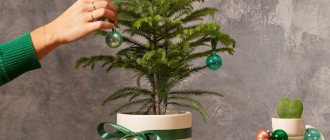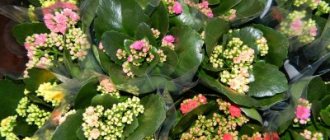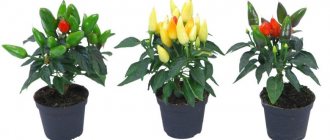When an amateur florist already has sufficient experience in growing succulents and cacti and knows the features of caring for these plants, then you can try your hand at creativity. We are talking about creating compact mini-gardens from the large and diverse world of desert flora. This is a very exciting process. And even if everything doesn’t work out right away, you will get great pleasure. Everything is not so difficult if you listen to the advice of experienced flower growers.
Some potted succulents sometimes look dull and lonely. And in combination with other plants that are suitable for care and maintenance conditions, they will show themselves in all their glory.
How to create beautiful compositions?
Selection of capacity
First you need to roughly imagine what kind of picture you would like to create - something like a landscape or a composition reminiscent of an extravagant bouquet. The type of container in which the plants will be planted depends on this. Sometimes compositions are created spontaneously, when the gardener accumulates a lot of children, trimmings after the formation of a crown or bush, they are put together into a single picture.
Aquarium: In round aquariums it is quite difficult to create a large composition. But everything is possible if there is a desire. First you need to disinfect the container. This can be done either with alcohol (just wipe) or with a chlorhexidine solution. At the bottom you need to pour crushed charcoal, preferably birch.
Coal absorbs organic residues and prevents mold from developing. Then we add drainage (usually expanded clay) and an appropriate soil substrate in an even layer. Since the aquarium is transparent, for beauty you can alternate the soil with layers of colored sand. Then we plant succulents and cacti depending on the plan.
Clay vase - flowerpot: it is better to use decorative vases with uneven, asymmetrical edges. There should be holes at the bottom for water drainage. The pallet must match the color and size of the pot. Pay attention to the color - it should match the plants. Clay is a hygroscopic material, so it is best suited for succulents. Pots with broken edges and giant shells can also be used as a container for a mini-garden.
Glass vase: There are large chip glasses on sale, as well as flowerpots with legs. They are dealt with in the same way as aquariums. But it’s very beautiful if you plant plants that hang like vines from the edge of the flowerpot. In all cases, wherever an exotic garden is arranged, it is necessary to add decorative details: colored glass pebbles, small fortresses (these are placed in an aquarium for fish), artificial moss and others.
A wooden box or pot made from a piece of solid wood: this method is for true connoisseurs of eco-flower culture. The material is quite difficult to care for and requires careful watering techniques (such a pot should not be wetted too much). If you decide to make a wooden container yourself, be sure to coat it with water-repellent varnish or wood impregnation before planting. Such a pot will look amazing in any interior, delighting you and your guests!
Also read: Propagating and growing succulents at home
Florariums: Recently it has become very popular to plant succulents and cacti in florariums. Nowadays, you can easily purchase a variety of geometric containers in online stores, and even florariums with ready-made compositions. Succulents grow well in florariums, this is due to the protection of the plant from drafts and temperature changes. Read the master class on filling florariums
Cactus sofa, the craziest and most original idea
The cactus sofa is a must have in your living room. This may seem like a crazy idea, but it's still an original design that deserves a little attention. Besides being a lot of fun, it's also convenient.
You can lie on its false spikes without fear of an accident. Of course, this is an original sofa for those who adore cacti and follow fashionable design.
Cactus is a powerful design resource that has many possibilities when it comes to home decoration. Choose ideas you like and use them if you need an element of freshness in any space.
Video about mini-kindergartens and caring for them
There is also a more economical option - find a suitable glass vessel at home and fill it according to your taste and desire.
What plants can be used
The center of the composition should be either in the center or on the edge. For the center, tree-like types of succulents are used. For example, you can use:
- Aeonium arboretum;
- Dorstenia;
- Sedum dendrodium tree (Sedum dendrodium);
- Pedilanthus tithymaloides (variety – low) (Pedilanthus tithymaloides v. Nanus);
- Crassula Hobbit or Gollum, as well as other varieties of Crassula.
- Cotyledon.
Then you need to place two or three small succulents or cacti . Of the succulents, some types of aeoniums (tiered, layered) look very beautiful, Dinteranthus microspermus - a plant that looks like gray stones in appearance, blooms with a yellow flower. You can also plant the hardiest cacti:
- Mammillaria;
- Echinopsis (Echinopsis);
- Rebutia aureiflora rubriflora;
- Chamaecereus silvestry.
It is desirable, and even necessary, to leave space in the foreground for small plants , especially if, as they grow, they will hang in small vines along the edge of the container. The more varieties there are, the more interesting the composition will become. Here you can place some of the plants such as:
- Weinberg's Sedum (Sedum weinbergii);
- Siebold's Sedum (Sedum sieboldii);
- Other types of sedum (Sedum).
Phytodesign
10 Unique Interior Decorating Ideas for Succulent and Cactus Lovers
Many of you may have noticed that lately designers have been trying to decorate their home or office with living plants. We can safely say that this trend of landscaping space is now at the peak of fashion. Palm trees, monsteras, coffee trees, spathiphyllum, an incredible number of flowers offered by flower shops - all this is used to decorate residential premises and offices.
A winter garden or just a green corner at home or at work not only gives joy and aesthetic pleasure, but also calms the nerves. It’s not for nothing that we all strive to go to nature on weekends: some to the country, some to the forest, some to tropical countries. The grayness and dullness of autumn makes you depressed, busy work days take away your energy, air pollution in the concrete jungle of cities causes headaches and other ailments.
And now those who find themselves in this trap of urbanization intuitively seek salvation in nature. Only in connection with nature can we achieve original harmony and perfection.
You don't have to be a designer to generate interesting ideas! The ideas proposed in this article will definitely inspire you to create your own green corner that will harmonize you every day!
Florariums
At its core, a florarium is close to an aquarium, only it contains exotic plants rather than fish. It is believed that a florarium is quite an expensive pleasure, but you can start with a small container that will decorate your space. Such decoration will not only please your eyes, but also reduce carbon monoxide from operating electrical appliances in the room, dust and other harmful substances contained in the air. Where to start and how to equip a florarium?
Proper planting of composition plants - step-by-step instructions
For proper planting, you need to purchase special tools: bamboo tweezers, small spatulas, an artist’s trowel is perfect, even a teaspoon is useful for filling small containers with soil.
- We prepare the soil or substrate components. We took some of the ready-made soil for cacti and succulents, drainage, sand and charcoal. All components were purchased in the store. If you take materials from the street, be sure to heat the sand and stones in the oven, or heat them in a frying pan.
- Select a container for planting and plants.
- Fill the prepared vessel (aquarium, glass vase, ceramic flat pot or deep dish) with drainage to at least ¼ of the height. In transparent containers, you can separate it with a layer of colored sand.
- Next, carefully pour in the mixed soil mixture. Leaving 1 cm from the top of the pot, we make depressions in the soil, marking where the plants will be planted.
- Carefully straighten the roots of the plants (for cacti, they must be carefully examined and old and rotten or dried roots must be cut out). Make sure that the root collar of the plant is not covered. This is important, if you deepen the neck, then accumulation of moisture and rot may occur.
Also read: How to properly care for Aloe
- We transfer all the plants, making a composition. We plant ampelous succulents along the edges.
- Cover the top layer of soil with sand. And then we decorate with large colored sand or small pebbles. You can take shells or pebbles.
- Finally, you can decorate the bare areas with colored pebbles, artificial moss, shells and place decorative elements. You can buy small ceramic gnomes, and if the composition is being prepared for a New Year's gift, then put figurines of Father Frost and the Snow Maiden.
How to Decorate Cactus and Succulents with Lights
How to Decorate Cactus and Succulents with Lights
In the Southwest and other arid climates, cacti and succulents often replace ornamental shrubs and trees as landscaping. With the philosophy of playing up what you already have rather than trying to hide it or replace something else, home decorators have been dazzling cacti with holiday lights for years.
So how do you light a succulent or spiny cactus? Very carefully, for starters. Wear a pair of suede or leather gloves that cannot be pierced by the needle-like cactus spines, which can even penetrate the strongest types of gloves.
Lighting Desert Plants for the Holidays
It's a little more time-consuming and specialized task for decorating cacti, succulents, yuccas and funky-shaped desert plants with string lights. Here are some tips and tricks:
- Invest in a good pair of gloves that will keep thorns and needles out. Also, wear long sleeves.
- For taller cacti or hard-to-reach branches, consider getting a gripping, grasping, or grasping tool. Some are even equipped with lights. By doing this carefully, you can wrap the cactus or limb without touching it.
- The barrel cactus is best wrapped in one color of string lights, like red or white, to make them ring.
- Sheer lights draped over a cactus are much simpler than wrapping string lights, although they have a different effect and do not outline the figure. Most are LED and some are solar, although they require several hours of sunlight to operate.
- Use a light hand when decorating—don't stretch the light strand or wrap it around the cactus.
- Some of the more delicate specimens may benefit from more traditional incandescent bulbs, which can create enough heat (not heat) to keep the cactus or succulent from freezing.
- Laser flood or spot lights are an easy way to illuminate a desert garden without damaging your plants. Every year they go up in price, and the technology improves.
- Using a smart LED light bulb like iLumi
Barrel cactus decorated with lights
The cactus barrel cluster has been carefully strung with LED strip lights and is ready to illuminate the nighttime desert wonderland at the Ethel M Chocolate Factory and Desert Botanical Garden.
Trunk cacti are divided into two types: Ferocactus
as well as
Echinocactus
. Most of these can be found in the southwestern desert regions of the United States.
Facts about Barrel Cacti:
- Can store up to and sometimes more than 500 kilograms of water
- Have the potential to live up to 100 years or more
- Hog cacti are probably the most dangerous cacti in (or out of) the desert. Puncture of one of the cacti's vertebrae (the spines), which penetrate 1/8 of an inch or so into the skin, requires treatment from a doctor: you may need antibiotics and may take several months to recover.
- The flowers bloom on old growth and are up to 3 inches wide and grow in a ring around the top.
- Easy to grow from seeds.
- Can contain up to 25 vertical ribs.
- Size: Up to 5 feet tall by 2 feet wide.
- Color colors: orange or yellow-orange.
Illuminated desert garden
When it comes to decorating desert plants for the holidays, no one does it better than the crew at the spectacular Ethel M Chocolates Cactus Botanical Garden in Henderson, which is the largest in Nevada and one of the largest collections of its kind in the world. The botanical cactus garden houses more than 300 species of plants. Half are cacti and succulents, which are primarily native to the American Southwest, and the other half are desert trees and shrubs from the Southwest along with Australia and South America. All of these plants were selected both for the beauty of their floral displays and for their ability to adapt to the southern Nevada climate. Stone types include Utah Bali Hi Chocolate and Arizona Moss Stone (from the nearby Grand Canyon area). Among cacti and succulents:
- Acacia: twisted acacia
- Agave: including the large and beautiful Agave Americana, aka Century Plant or Maguey's Century Plant and Agave attenuata
- Aloe: There are more than 500 species of aloe; the most common or familiar is Aloe vera
- Compass Barrel Cactus: Ferocactus cylindraceus
Magic light display
With a landscape base of 15,000 cubic yards of sand fill and special planting soil, the beds in the Ethel M Garden have been raised and the rookeries constructed using 400 tons of stone, thereby providing the best possible viewing experience for visitors.
Cactus Garden Display
The Cactus Garden features more than half a million lights that lighting designer Steve Bowdoin and his team carefully locate on the prickly and sometimes delicate cacti and succulents. As a guide to How to Light and Decorate Cactus and Succulents, Bowdoin learned through trial and error, as well as his experience and familiarity with plants and the environment. Bowdoin and his team take about six weeks to burn all the lights each January.
Care
Watering
The most difficult and careful action in caring for a mini-kindergarten. Therefore, it is so important to select plants with the same water needs. All succulents love heat and good light, but watering should be scanty enough to just moisten the soil.
If a plant is planted that loves abundant but infrequent watering (there are such tropical succulents), then it is watered pointwise, under the ground near the root. In summer, the composition is watered as the soil dries, which is easiest to check directly with your hands. In winter, once every 2-3 weeks, it’s not worth it more often. All plants are in the resting stage.
When a succulent lacks moisture, it begins to grow roots and release aerial roots. If you water too often or too much, the plants may rot and die. Explain to your family not to water the plants, even if they think it’s time to water. Set a rule that only you do this. Otherwise, compassionate relatives will feel so sorry for the poor flowers that you will have to start all over again.
You should not water mini-gardens with cold water; it is better if you use water at room temperature. This is especially true for small seedlings and watering in winter. It is convenient to use a syringe for watering.
Lighting
Select light-loving plants - this includes all succulents and cacti. Therefore, they need to be placed in a well-lit place - a loggia, a balcony. But this is in the summer, when the night temperature is quite high. You also need to take into account the attitude towards direct sunlight, cacti love it, but some succulents can get burned. To prevent this from happening, use mesh shading.
They also need sunlight in winter, so you need to place the pot close to the window to get as much light as possible. But lighting is necessary if there is a catastrophic lack of light: if the windows are on the first floor and because of the trees, the sun’s rays cannot get through to your window sill. Due to lack of light, plants stretch out, become lethargic, lose all their attractiveness and even change color. Without light, no succulent will grow well!
In summer, with scanty watering, the colors of succulents become brighter; they become especially beautiful if they are left on a balcony or loggia on dry, sunny autumn days. Coolness has a stimulating effect on succulents, they become brighter, the leaves either shine more, or, on the contrary, the edges on the plants increase.
Temperature
Mini-compositions feel great in the temperature regime of our city apartments; in summer the temperature is 20-25 degrees; with regular ventilation, such compositions simply have resort conditions. You can put them on the loggia, on the balcony, on the terrace of a country house.
Also read: How to care for succulents at home
In winter, in our apartments, succulents and cacti suffer from lack of lighting, but the temperature should be about 10-15 degrees. This can be done by isolating the window sill from the heat that comes from the central heating radiators. At low temperatures, succulents freeze and during this period you can not water them at all, they do not need extra moisture. Then you will avoid pulling the flower.
Humidity
All succulents and cacti come from hot, dry places, so they don't need humid air. They love dry air and ventilation. You can’t just put compositions in a draft. Although the plants are not delicate, and can tolerate short-term inconvenience, constant exposure to a draft threatens deformation of the stems and loss of leaves. High humidity has a depressing effect not only on succulents, but also on cacti. Especially during the flowering period.
The soil
There are many options for making soil mixtures. Ready-made mixture purchased at a flower shop. For a novice amateur gardener, one well-tested substrate composition scheme is enough:
- The soil for the compositions is made on the basis of peat. It is better to buy a ready-made peat mixture (preferably made in Germany), taking a certain amount of peat - you need to check it, remove sticks and other debris;
- Then add perlite, about one third of the peat mixture. It gives the substrate looseness and water permeability;
- It is imperative to add fine expanded clay (3-5 mm in diameter) to the mixture. It is put in the same amount as you put in perlite. Expanded clay is needed by the roots, as they must cling to support;
- Add charcoal and sand. Coal protects the roots from rotting, and sand helps pass moisture through the soil. Some gardeners plant succulents in sand alone, adding expanded clay and coal to the bottom of the vessel, without using soil or peat.
Transfer
Replanting plants in a mini-garden rarely happens, but if you suddenly decide to replace one plant with another, more extravagant one, you need to carefully use a flat wooden stick to free the roots from the soil and the roots of other succulents. Often the roots are intertwined quite tightly, you can try to slowly pull the plant out.
If you decide to transplant the entire composition into a larger pot or a more beautiful vase, then this should be done using the transshipment method. Try to free all the plant roots from the remnants of the old soil and, when planting in a new container, distribute them evenly over the entire area. At this point, you can add new plants if you consider this addition necessary.
Fertilizer
You can fertilize succulents from March to November, once a month, with special fertilizers with a low nitrogen content. Dividing according to instructions. The photo shows how much dry fertilizer you need to take per 0.5 liter of water.
Very important!
It is necessary to determine in advance what lighting will be at the location of your composition. Not all plants can grow in low light conditions.
Thus, everyone’s favorite echeveria (stone rose), which looks very impressive in compositions, loves light. If it doesn’t get enough sunlight, it will quickly begin to grow upward and ruin the intended composition.
Echeveria (stone rose)
If there is little light in the room, then you will have to take the choice of plants seriously.
But even in a dark room you can afford a living plant.
Zamioculcas shade-tolerant (dollar tree) - well suited for creating large compositions.
When planting mono, you need to use several plants for one pot, this will create the necessary volume of the crown.
Zamioculcas is an unpretentious plant that does not require abundant watering.
If there is a lot of light, its leaves will begin to lighten. Therefore, choose places for it with average illumination in the interior of the room.
Photo source - Yandex pictures
The plant has large roots, so it needs a large pot. Otherwise, expanding roots may cause a crack in the pot.
Photo ideas for creating succulent gardens
If you still have questions, you can ask them in the comments to the article! Thank you for reading us, good luck in your creative flower growing business!
Crocheted pincushion
The execution of this craft is not much different from that described above. Only a hook is used, and all materials and methods are the same.
You need to crochet a cactus, fill it with padding polyester, decorate it with a flower and needles - pins. Prepare a pot and a hole from foam in advance, grease the inner hole with glue and carefully insert the cactus.
Materials, tools and preparation for work
Speaking about the list of materials from which you can make a cactus with your own hands, it is worth noting that the list can be endless, since both special blanks from craft stores and improvised means will be used:
- Paper;
- Beads;
- Textile;
- Felt;
- Yarn;
- Pebbles.
The options don’t end there, because a true master can make a masterpiece out of nothing, and a beginner will only need to draw a plant or repeat one from lessons.
For work, you may need different tools: it all depends on the type of product, but the standard set remains unchanged - scissors, glue, thread - something that can be used to cut and attach.
A prerequisite for starting work will be familiarization with the theoretical material and the gallery of ready-made crafts, since they will become a source of inspiration or an example of a fun craft.
After all, doing handicrafts always carries a specific goal: for some it is a hobby, for others it is a way to earn money, and for some, the real challenge is the inevitable homework of their beloved child.
Cactus as a keychain or pendant
A keychain or a cute decoration for a woman is also possible in the form of succulents. Of course, if you wish, you can use any available materials, but as experience shows, beaded cacti will be better and stronger. Moreover, such a craft always delights women because it is beautiful, unusual and speaks of the owner as a real craftswoman.
Weaving with beads is a separate science and not many people take it up, citing complex designs, high costs of material and time, but not in this case. A master class on how to make a cactus with your own hands using beads according to a pattern is direct proof that everything ingenious is simple.
To make this decoration you will need beads:
- orange – 6 pieces;
- red – 8 pieces;
- brown – 17 pieces;
- green – 29 pieces.
The thread is threaded according to the pattern, securing a lock or loop, and at the end it is tied into a double knot.
What it is?
Succulents are plant species that have the unique ability to store water in their tissues. Therefore, they are adapted to arid climates. Succulents have 2 varieties.
- Stem plants accumulate moisture in a thick stem; the leaves of such plants are most often very small or have spines. These varieties include the bulk of cacti and some types of milkweed.
- Leafy plants accumulate moisture in dense thickened leaves. Of these succulents, aloe, lithops, haworthia, and echeveria are especially popular.
It is from these specimens that succulent growers make chic compositions and decorate entire zones. The unique feature of retaining moisture for a long time makes caring for plants much easier. They are especially readily used by people who, for various reasons, cannot regularly care for plants, for example, due to frequent business trips.
Succulents are so convenient in this regard that you can go away on vacation and upon return find your pets alive and unharmed. And if it happens that the plants have not received water for a long time, another feature saves them: the upper part may die, but when watered, new stems will grow again.
